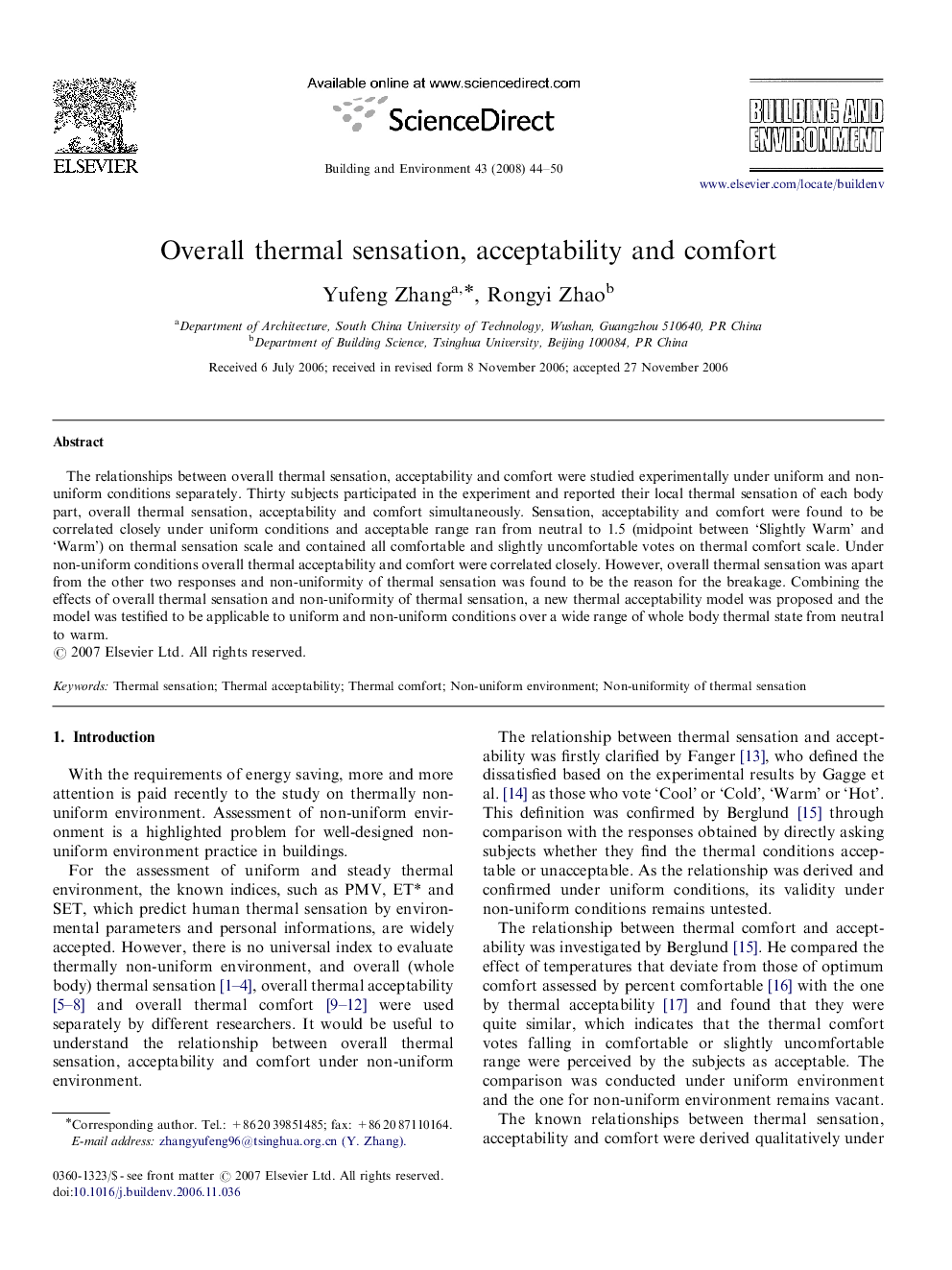| Article ID | Journal | Published Year | Pages | File Type |
|---|---|---|---|---|
| 249919 | Building and Environment | 2008 | 7 Pages |
The relationships between overall thermal sensation, acceptability and comfort were studied experimentally under uniform and non-uniform conditions separately. Thirty subjects participated in the experiment and reported their local thermal sensation of each body part, overall thermal sensation, acceptability and comfort simultaneously. Sensation, acceptability and comfort were found to be correlated closely under uniform conditions and acceptable range ran from neutral to 1.5 (midpoint between ‘Slightly Warm’ and ‘Warm’) on thermal sensation scale and contained all comfortable and slightly uncomfortable votes on thermal comfort scale. Under non-uniform conditions overall thermal acceptability and comfort were correlated closely. However, overall thermal sensation was apart from the other two responses and non-uniformity of thermal sensation was found to be the reason for the breakage. Combining the effects of overall thermal sensation and non-uniformity of thermal sensation, a new thermal acceptability model was proposed and the model was testified to be applicable to uniform and non-uniform conditions over a wide range of whole body thermal state from neutral to warm.
